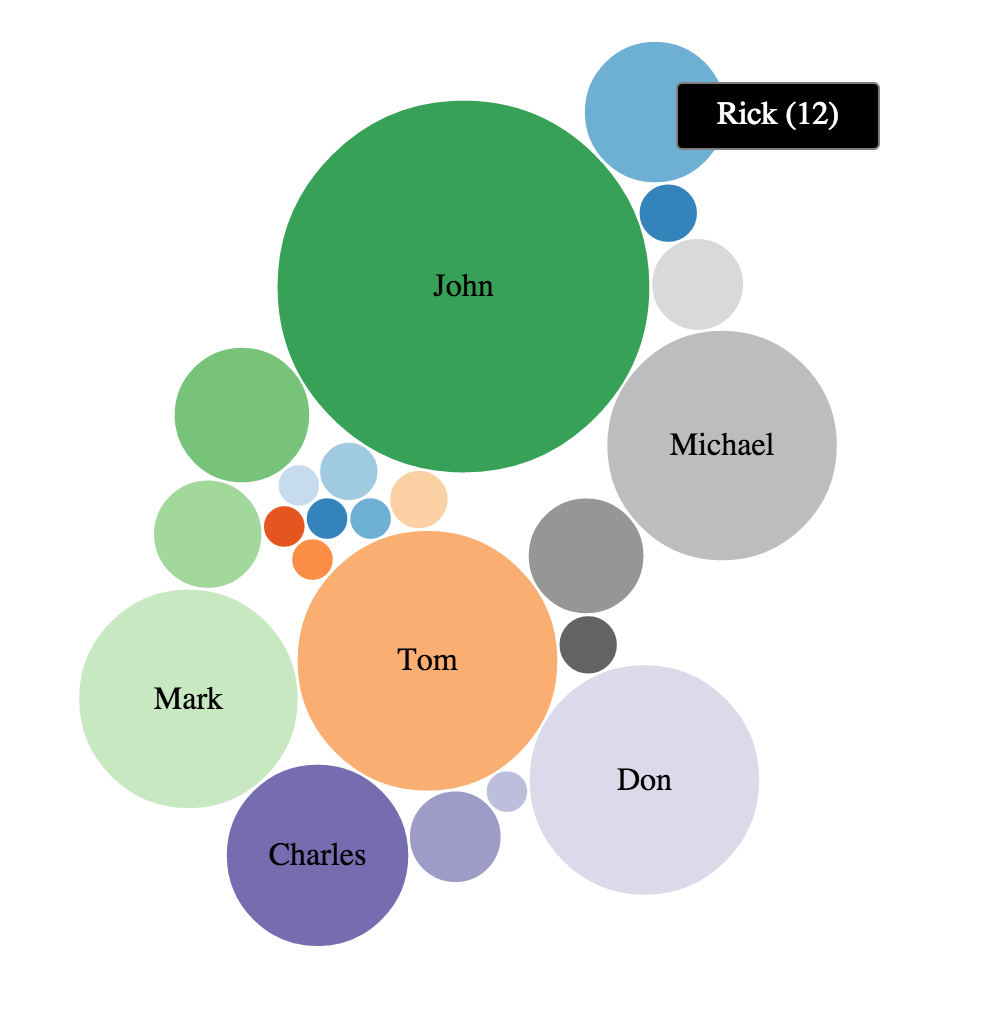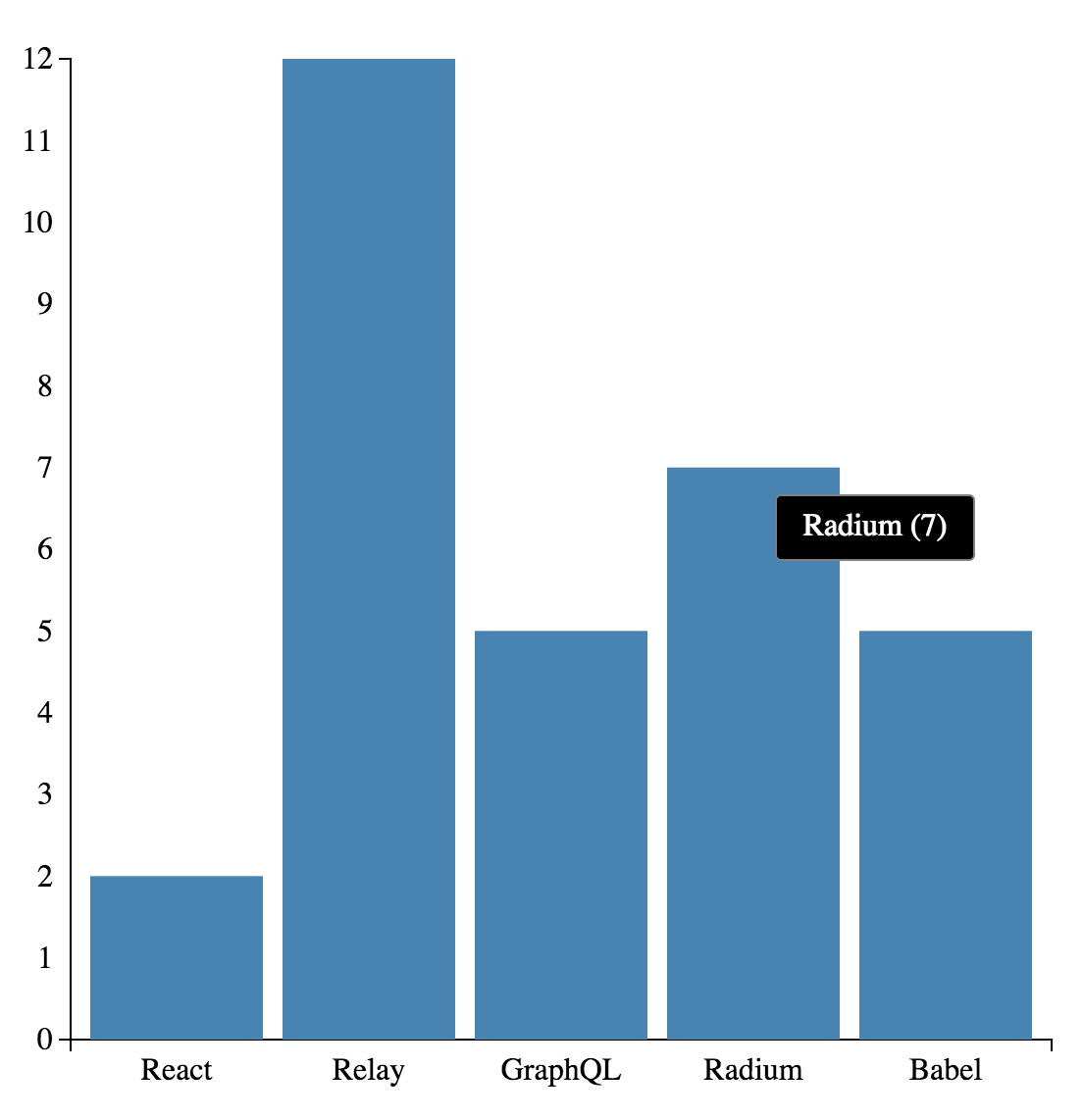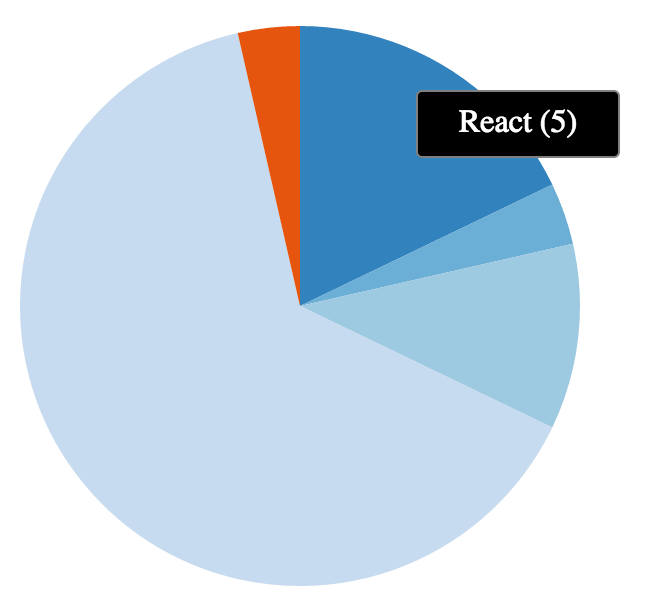myd3 v0.0.2
d3act - d3 with React
Background
d3 has been the de facto standard when it comes to data visualisations for a while now and React has recently emerged as the go-to library for building user interfaces. d3 and React are both data-centric libraries, making them a natural fit; d3 takes a data-driven approach and React aims to solve the problem of data changing over time in the context of building large applications.
In recent months, there have been various approaches documented & implemented in order to showcase how to effectively use d3 and React together, especially with a focus on letting React do the SVG rendering:
- "D3 and React - the future of charting components?" by 10consulting
- "ReactJS and D3 Part I: Layouts" by Colin Megill
- "react-d3 by Eric S. Bullington"
- "react-d3-components by Neri Marschik"
Nicolas Hery's "Integrating D3.js visualizations in a React app" talks about letting d3 do all the work after React has finished rendering components in the DOM. d3act is inspired by @nicolas_hery's approach; create a lightweight React component wrapper that maps React's lifecycle methods componentDidMount, componentDidUpdate and componentWillUnmount into a d3 chart's create, update and unmount methods respectively.
d3act and the idea behind it was first presented at ReactEurope 2015 as a five minute lightning talk; you can watch it here.
How does this improve DX?
During the keynote at ReactEurope 2015, vjeux introduced the idea of DX (Developer Experience) - akin to UX (User Experience), but with a focus on enabling developers to build great UX with the best possible tools & technologies. Things like Babel, Redux and Radium definitely tick the DX box.
So how does d3act improve DX? The need for creating d3act first emerged while building multiple d3-based visualisations to handle very large data sets in a single page in the context of a React app. Letting React manipulate and render SVG elements proved to slow things down - not by much, but at the scale of data that was being handled, this became a bottleneck.
At the same time, all existing visualisations were already written in the standard d3 way which performed best - so in order to improve the DX let's wrap these existing d3 visualisations in a lightweight React component that can extend to any such visualisations.
As a result, d3act aims to enable a better DX by enabling:
- Use of existing
d3visualisations - Keep creating
d3visualisations using the same syntax - Don't worry about taking apart
d3's approach and reimplement the same things inReact - Integrate seamlessly with
Reactapplications - Utilise what each library is best at
Getting Started
npm install d3actExamples
It's as simple as...
<Chart
type={"pie"}
width={300}
height={300}
showTooltips={true}
data={
{
"React": 2,
"Relay": 12,
"GraphQL": 5,
}
}
/>...and you can use already existing charts
Ensure your existing charts have constructor, create, update and unmount functions.
class PreExistingChart {
constructor(el, props) {
this.el = el;
this.props = props;
}
create(data) {
// Create your chart
}
update(data) {
// Update your chart
}
unmount() {
this.el.remove();
}
}
<Chart
type={"custom"}
customChart={PreExistingChart}
data={
{
"React": 2,
"Relay": 12,
"GraphQL": 5,
}
}
/>To see examples in action locally:
npm install
npm run examplesHead to http://localhost:8080/ and see charts in action as below:



How do I update charts?
Just update your data state and all else is handled for you.
What's next?
- Improve API so that you can customise charts beyond just dimensions and margins
- Better error handling
- Manage state better
- Improve tooltips & make them more extensible
- Think about making expected data for each visualisation a little more uniform
- Add tests
Is this the best way to combine d3 and React?
This is one way of combining d3 with React; there are plenty of other ways as already outlined - pick what works best for you. I don't think there is such a thing as a global 'best way' of combining d3 with React, it very much comes down to what you want to do with it.
Contributing
All contributions are welcome; fork the repository, make your changes and open a pull request. Try to stick to the coding conventions that are already in place.
To build things locally, you can just grunt watch from the project's root directory. This will also lint code using ESLint; if you would like to just lint the code, you could also just use grunt lint.